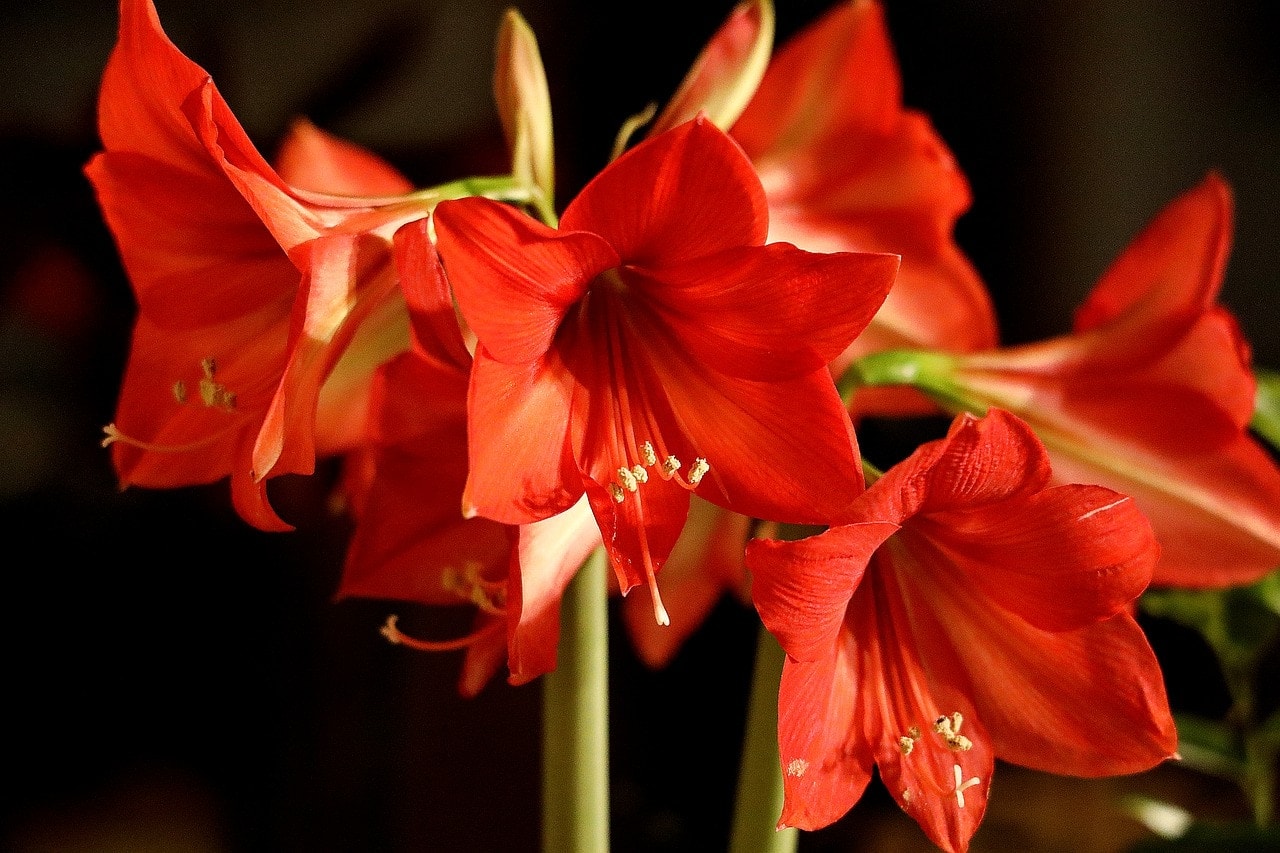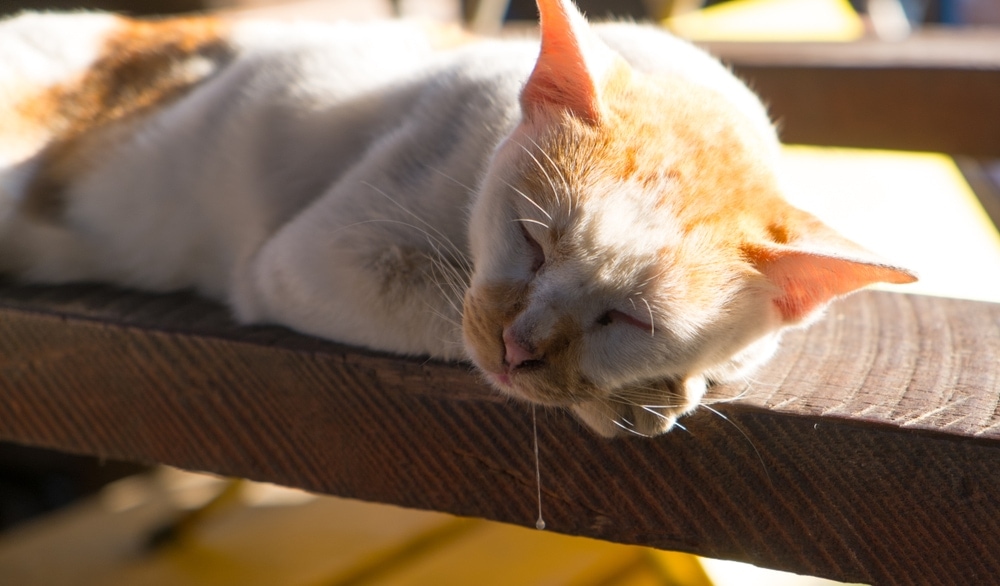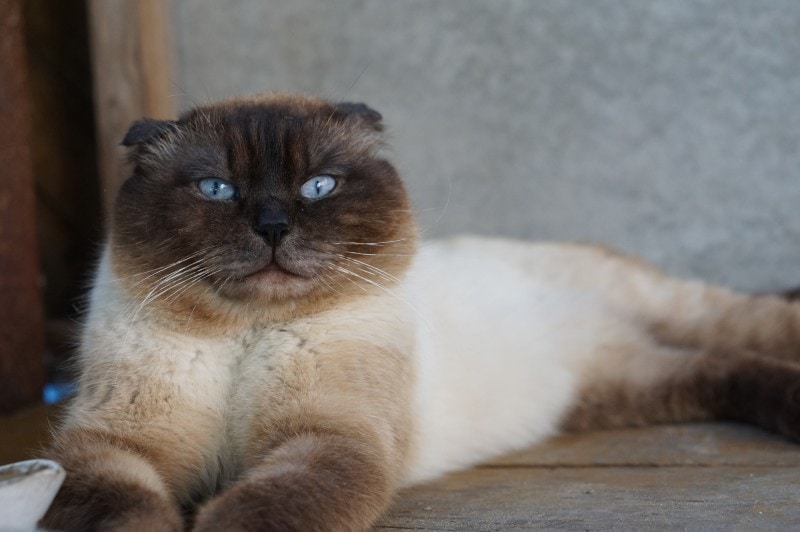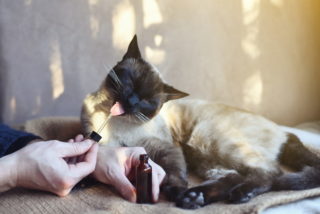Is Amaryllis Poisonous to Cats? Vet-Reviewed Safety Facts
Updated on

Amaryllis is a popular gifted winter holiday plant people enjoy. It’s easy to grow and has large, showy flowers in a variety of colors. What we find beautiful, however, our cats may be tempted to snack on. So, you may want to know if amaryllis is poisonous to your cat.
Yes, amaryllis is toxic to cats, according to the ASPCA.1 In this article, we’ll talk about what parts of the amaryllis are poisonous to cats and what to do if you suspect your cat has ingested this plant. We’ll also discuss some safer plant options out there.
What Is Amaryllis?
Amaryllis is commonly sold for winter blooming in the United States. It is a member of the Liliacea family and has toxic effects similar to flowers found in the Narcissus group. This flower is known by several other names, including belladonna lily, naked lady, Saint Joseph lily, and cape belladonna.
Amaryllis typically sprouts two 12–20-inch stems from a planted bulb. Each of the bulbs produces two trumpet-shaped flowers in a variety of colors, including red, pink, orange, and salmon.

What Makes Amaryllis Poisonous to Cats?
Amaryllis contains several toxic compounds. All parts of the plant–flowers, leaves, stems, and bulbs–are poisonous to cats. One of these toxic components is lycorine, an alkaloid also found in other closely related plants like the daffodil.
The plant contains other toxic alkaloids from the same family as lycorine, while an additional toxic component, raphide calcium oxalate crystals, is mostly found in the bulbs.
What Are the Signs of Amaryllis Poisoning?
The different toxic compounds in amaryllis cause separate signs, so you may notice all or some, depending on which part of the plant your cat ingests. The most common signs of amaryllis poisoning are:
- Vomiting
- Decreased blood pressure
- Slower breathing rate
- Excessive drooling
- Belly pain

What Should I Do if My Cat Eats Amaryllis?
If you catch your cat chewing on amaryllis or suspect they have done so, first remove the plant from their reach. Place your cat in a single room and keep an eye on them while you contact your veterinarian. Your vet may ask you to contact the ASPCA or Pet Poison Control Helpline before bringing your cat in.
With any ingestion of a toxic substance, your vet’s goals are first to keep as much of the poison as possible from being absorbed into your cat’s body and then to provide supportive care as your cat deals with the effects of what remains.
What Plants Are Safer for Cats Than Amaryllis?
Unfortunately, most of the popular holiday plants are also toxic to cats, including poinsettias, mistletoe, and lilies. However, the Christmas cactus is a safe option to gift cat owners.
- Sunflowers
- Roses
- Snapdragons
- Orchids
- Boston fern
- Venus flytrap
- Spider plant
- Herbs, such as basil, dill, or rosemary
For a more extensive list, see the ASPCA’s guide to toxic and non-toxic plants.
Keep in mind that even safe plants can cause some stomach upset for your cat if eaten in large quantities. Many fertilizers and pesticides are also toxic to cats even if the plant itself isn’t. An additional danger is posed by glass vases or pots, which can shatter and injure your cat if knocked over.
Keeping plants away from cats, either in another room or in a hanging pot, is still the safest way to go. You might also consider growing some cat grass or catnip so your cat can have their own plant to gnaw on.
Conclusion
Amaryllis can bring a bright splash of color to your home during the long, gray days of winter. However, this plant can have some toxic effects on cats. Even the bare, un-sprouted bulbs are poisonous if eaten. Look for a safer plant with a dose of beauty to help you combat the winter blues. Life can get complicated for those who love both plants and cats. But if you do your research and take proper precautions, beautiful blooms and frisky felines can co-exist safely.
Featured Image Credit: WFranz, Pixabay












